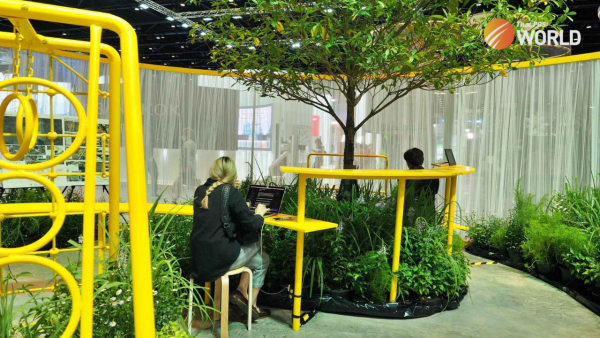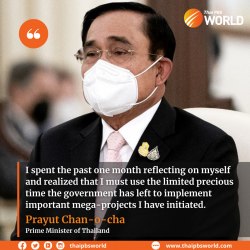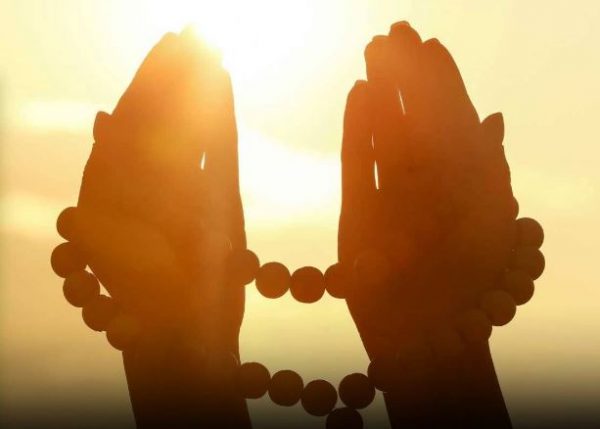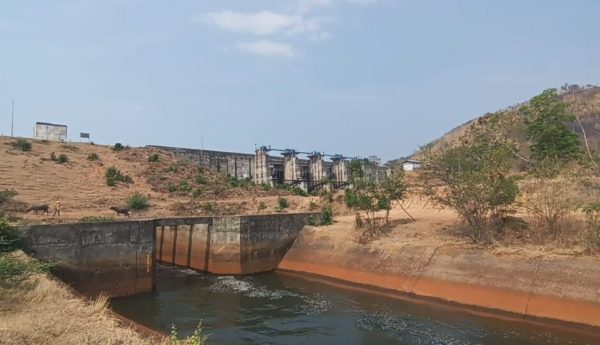The greening of a city

Experts recently agreed that Bangkok is getting closer to becoming a green metropolis, though only if every stakeholder lends a hand.
At the “Bangkok Green Link”, part of the Sustainability Expo 2022 (SX2022), a panel made up of Adisak Guntamueanglee from the Urban Design and Development Center (UDDC), landscape architect Yossapon Boonsom from we!park, Anunta Intra-aksorn from Big Trees Project, and Pareena Payukvong from Wastegetable discussed how to increase quality green spaces for every resident.
Increasing green space for urban life
“It’s been proved that green space is essential for urban life and Bangkok is in urgent need of it,” said Adisak, an assistant director at UDDC, as he opened the afternoon session. To have a good quality of life, a resident should be able to access a park within 15 minutes or 400 meters from their residence. As it stands now, the average distance for most Bangkok residents to reach a green space is around 5km or 45 minutes.
According to UDDC, the overall green space per person in Bangkok is around 7.6 sqm, compared to 13 sqm in Paris. The availability of green space in Bangkok is still lower than that recommended by the World Health Organization of a minimum of 9sqm per person.
However, Adisak pointed out that some of the so-called green spaces in Bangkok, such as those used as road dividers or on private land, are useless because of their inaccessibility. Practical green space, he stressed, should be open for public access.
To compete with a city like Paris, he said, Bangkok will need to put more effort into increasing public green space by opening up underused spaces in temples, government and military properties, and even golf courses. Property owners don’t need to give up their ownership, merely open their space for public use.
New public parks or green spaces don’t need to be as huge as Lumpini or Watchirabenjathat (Suan Rotfai) parks, Adisak continued. But small new parks should be created within reach or communities, and most importantly, designed to meet the needs of the nearby residents.

An inclusive park
The idea of building green ‘dots’ that will eventually link the whole city is supported by we!park, a civic group that is trying to turn underused or deserted plots in the city into ‘pocket’ parks so communities around the capital can enjoy green spaces within easy reach.
We!park proposes that different models of cooperation be used to create green space for public access. One is a park fully owned and managed by the government such as Hua Lamphong Rukkaniwet Park or fully owned and managed by the private sector like G Garden and Sansiri Backyard. The other model is public-private cooperation, which can take the form of either public sector investment in private property such as Suan Santarana or vice versa such as Choduk Community Park.
But creating a park was no longer the main issue, Yossapon added. It’s the creation of an inclusive park that poses a greater problem.
Yossapon recalled being stunned by a street vendor’s comment that public parks were a middle-class dream because low-paid workers or vendors like her couldn’t afford time to enjoy the park. While the middle class called for green space, vendors needed a trading space.
An ideal public green space should be designed for general use, recreational activities, and for small trading too, he said.

Edible garden
To Pareena of Wastegetable, a green space doesn’t always mean big trees or huge space for recreational activities. It can also be an edible garden that’s not only producing food but also reducing food waste.
Her Wastegetable, an edible garden situated on a 200sqm rooftop of Center One Shopping Plaza near the Victory Monument, is an example of the circular economy.
The fertiliser used in the garden is a product of food waste within the building. Since its inception four years ago, Wastegetable has managed to turn 200kg of food waste into fertiliser daily and produce 240kg of produce monthly. Last year, the garden helped reduce the carbon footprint by 180 tonnes.
Pareena said there were around 7,000 rai (a rai is equivalent to 1,600 sqm) of unused land and around 1,280 high rise buildings in Bangkok. If just 10% of these unused spaces could be borrowed to grow food, Bangkok will become much greener, food waste will be reduced, and communities will certainly have more fresh produce to consume.

Plant your tree now
Protecting trees, especially big ones, is a way to keep Bangkok green. But Anunta of Big Trees Project said conserving trees may not be enough to make Bangkok as green as many might wish. Planting new trees is a solution.
Big Trees Project was formed about 10 years ago by a group of people from different paths of life. After their first mission to save a big tree on a construction site on Sukhumvit 35 failed, the group went on to save big trees in the city by educating the general public and providing training in arboriculture for the Bangkok Metropolitan Administration’s park officials.
Anunta cited a Chinese proverb saying the best time to plant a tree was 20 years ago, which means, by now, the tree would be mature enough to provide shade. But if you missed the best time, Anunta added, “the second best time is now”.
IF YOU GO
The SX2022, which focuses on sustainable development practices and features exhibitions, talks, and a food festival, continues until October 2 at the Queen Sirikit National Convention Center in Bangkok. For more information, visit www.sustainabilityexpo.com.






